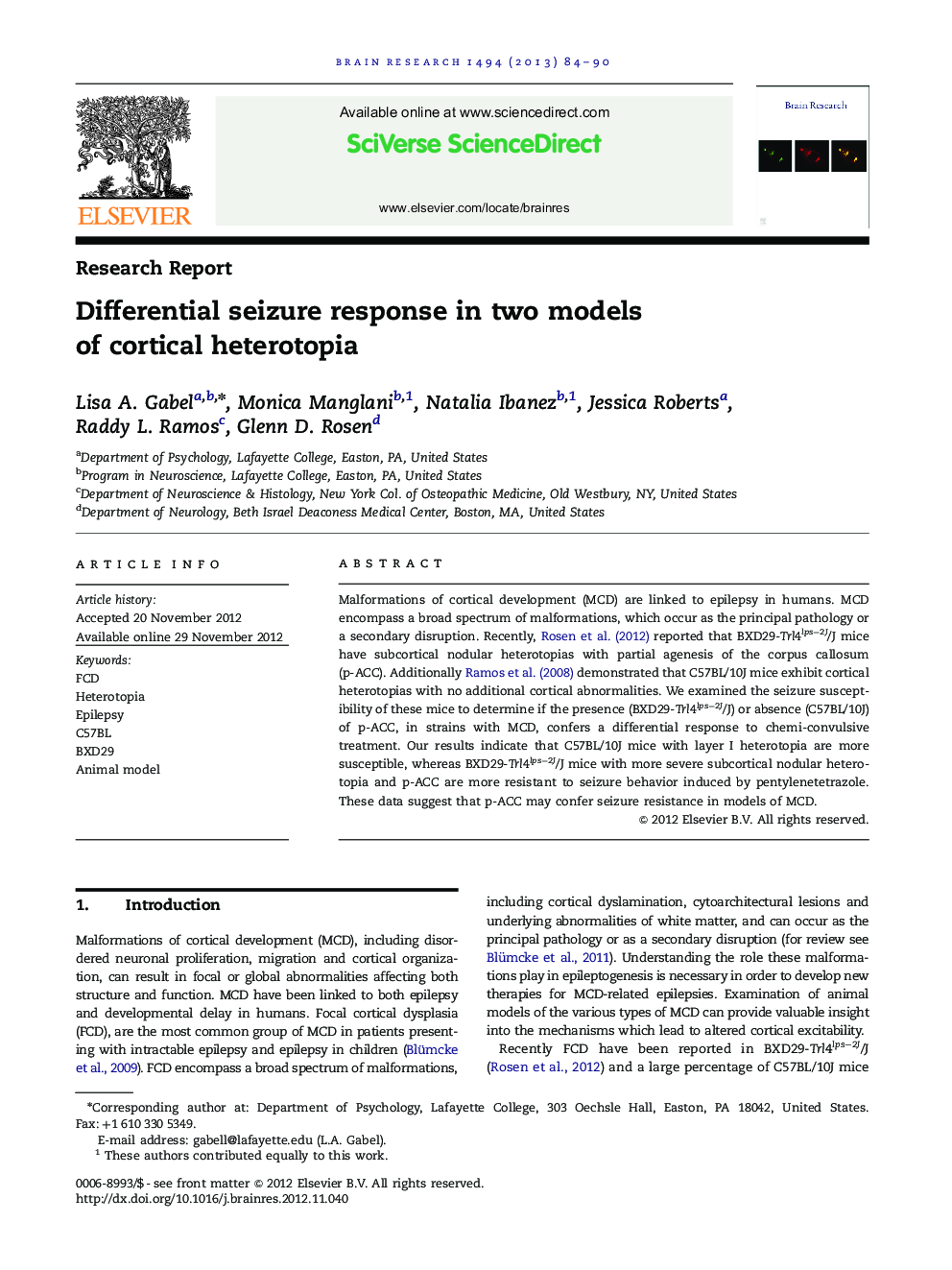| Article ID | Journal | Published Year | Pages | File Type |
|---|---|---|---|---|
| 4324894 | Brain Research | 2013 | 7 Pages |
Malformations of cortical development (MCD) are linked to epilepsy in humans. MCD encompass a broad spectrum of malformations, which occur as the principal pathology or a secondary disruption. Recently, Rosen et al. (2012) reported that BXD29-Trl4lps−2J/J mice have subcortical nodular heterotopias with partial agenesis of the corpus callosum (p-ACC). Additionally Ramos et al. (2008) demonstrated that C57BL/10J mice exhibit cortical heterotopias with no additional cortical abnormalities. We examined the seizure susceptibility of these mice to determine if the presence (BXD29-Trl4lps−2J/J) or absence (C57BL/10J) of p-ACC, in strains with MCD, confers a differential response to chemi-convulsive treatment. Our results indicate that C57BL/10J mice with layer I heterotopia are more susceptible, whereas BXD29-Trl4lps−2J/J mice with more severe subcortical nodular heterotopia and p-ACC are more resistant to seizure behavior induced by pentylenetetrazole. These data suggest that p-ACC may confer seizure resistance in models of MCD.
► Animal models of MCD provide insight into mechanisms of altered cortical excitability. ► We examined seizure susceptibility in two genetically related mouse strains with MCD. ► BXD29 mutant mice with subcortical heterotopia and p-ACC are resistant to seizure. ► C57BL/10J mice with less severe cortical dysplasia are more susceptible to seizure. ► Future studies should examine role of p-ACC in seizure resistance in BXD29 mutant mice.
